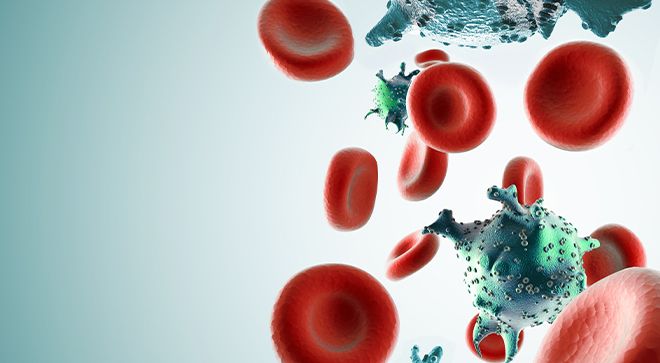Article
Topline Results Support Quicker, Convenient Administration of Darzalex in Myeloma Therapy
Author(s):
Outcomes associated with subcutaneous injections of Darzalex (daratumumab) appeared similar to IV administration in patients with relapsed or refractory myeloma, according to the phase 3 COLUMBA trial.
Outcomes associated with subcutaneous injections of Darzalex (daratumumab) appeared similar to intravenous (IV) administration among patients with relapsed or refractory myeloma, supporting the idea that this is a more convenient option, according to topline results from the phase 3 COLUMBA trial.
“With the data from each of the key clinical studies we learn more about the difference that daratumumab potentially can make to the lives of patients suffering with multiple myeloma. I am particularly excited about the results from this study as it may support a much quicker and far more convenient administration of daratumumab, which would provide an important benefit for many patients and their families,” Jan van de Winkel, Ph.D., chief executive officer of Genmab — the agent’s developer – said in a company-issued press release.
With the subcutaneous method, a drug is injected with a needle into the tissue under the skin, and when the medication is absorbed, usually there is a lower level of the drug in the body sustained for a longer period of time compared with IV administration. While IV medications travel through the vein directly into the circulatory system and act more quickly than injections under the skin, this can lead to more toxicities.
Researchers started exploring the possibility of reformulating IV medications as subcutaneous injections to reduce the toxicity of the drugs and to improve convenience for patients, Stephen Ansell, M.D., Ph.D., a hematologist at Mayo Clinic in Minnesota, told CURE. Although the peak levels of the drug may vary with these two forms of administration, studies suggest that both methods are equally effective.
In the randomized, open-label, parallel assignment phase 3 COLUMBA trial, 522 adults diagnosed with relapsed and refractory multiple myeloma were randomized to receive either subcutaneous (263 patients) or IV (259 patients) administration of Darzalex to determine non-inferiority in efficacy and pharmacokinetics (the movement of drugs within the body).
Patients treated subcutaneously demonstrated an overall response rate of 41.4 percent compared with 37.1 percent in those treated with IV administration. In addition, the maximum concentration at the end of the dosage interval of Darzalex on day one of the third treatment cycle met the specified non-inferiority criterion, Genmab reported. Lastly, no new safety signals were detected.
Darzalex is an IV formulation that is approved by the Food and Drug Administration in various combination regimens for the treatment of patients with both newly diagnosed and pretreated myeloma, as well as a single-agent to treat patients with heavily pretreated disease. In addition, earlier this month, the agency approved a split-dosing regimen of Darzalex for patients with multiple myeloma, providing physicians the option to split the first infusion of the CD38-directed monoclonal antibody over two consecutive days or complete in a single session.




